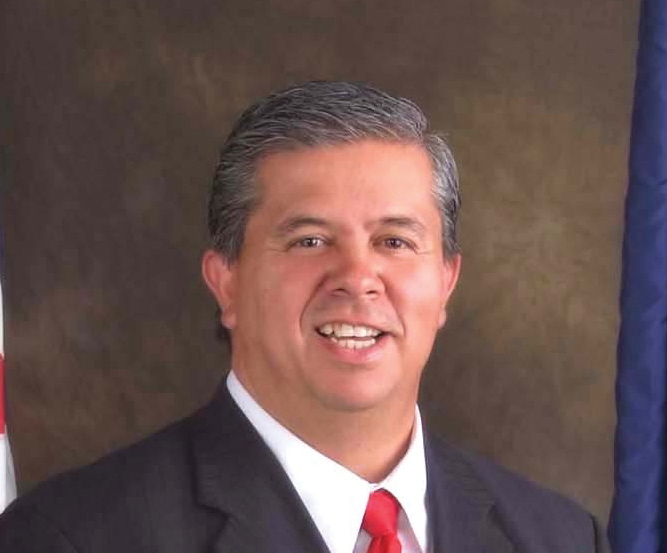Superintendent of Public Instruction Tom Luna today called for a $77 million increase in public school funding in 2014-15 – with more than half of the new spending tied to teacher pay.
This bump would represent a 5.9 percent general fund spending increase, bringing the public schools budget from $1.308 billion this year to nearly $1.4 billion.

The budget proposal calls for putting $42.5 million into a career ladder teacher pay plan, recommended earlier this year by Gov. Butch Otter’s Task Force for Improving Education. This would begin a five-year phased process to dramatically transform teacher pay, by using a licensure system and tying incentives and rewards to an accountability system.
If the plan were fully phased in, starting teachers would earn $40,000 per year in six years, up from the current state minimum of $31,000. Tiers of $50,000 and $60,000 would also be established. Luna said the pay system could go a long way to attracting and retaining the best and brightest.
“We’ll be spending about $250 million more on teacher compensation in six years,” Luna said. “For seven years or more, I’ve made it clear we have to find a way to pay teachers better, and the only way is to move away from the salary grid where teacher pay is based only on how long they’ve taught and their education.”
Luna also called for an advisory committee to craft the details of the career ladder and the implementation.
“It’s critical we find success in agreeing on what tiered-licensure will look like if we are going to have a successful rollout,” Luna said.
His proposal also begins addressing another key task force recommendation – restoring school operational budgets, also known as “discretionary” funding.
Luna would set aside $16.5 million to begin reversing about $82 million in recession-era cuts. The $16.5 million would increase per classroom operational spending from $20,000 this year to $21,140 next year. Per classroom spending peaked at $25,696 in 2008-09, and Luna’s plan would restore that money over five years.
Luna delayed submitting his initial budget for 30 days in order to build it around some of the task force’s recommendations. In an interview with Idaho Education News, he said its up to task force members and those who support the recommendations to continue to champion the ideas.
“It seems like the wheels start falling off when it comes to two areas – implementation and/or the revenue necessary to implement the recommendations,” Luna said. “The same people involved in making the task force successful need to stay involved and continue to be persistent until the recommendation are implemented.”
The proposed budget does not identify a source for the new $77 million, but Luna has ideas. He suggested the state begin collecting taxes on Internet sales, an issue that the Legislature so far has declined to move on and which may require additional congressional approval.
Luna called for recalibrating state endowment lands payments to focus on current beneficiaries, including public schools. He also suggested taking advantage of natural resources from state lands, like officials in Wyoming and other states have.
“We have 90 days to work together (now), then another 90 days once the Legislature comes to town,” Luna said. “I’ve got to believe in that time frame we can find a solution to this.”
During a speech in front of the Meridian Chamber of Commerce on Tuesday, Luna estimated the cost of implementing the task force’s recommendations could range between $350 million and $400 million over six years.
Sen. Steven Thayn, R-Emmett, was in the audience and voiced support for the direction Luna is taking.
“I think he’s doing the right thing as far as trying to implement the task force’s recommendations,” Thayn said.
But Thayn, who holds key seats on the Senate’s budget-writing and education committees, said finding $400 million in new funding may be a stumbling block.
“There’s going to be some competing budgets like the Department of Correction and also medical costs,” Thayn said. “What we need to do is come up with a way to do all of this being a little more efficient because I don’t think we’re going to have quite that much money over the next five years to do all of this.”
Luna’s initial budget represents just the first step in a lengthy process. In January, Otter will submit his own proposal. Then, the Legislature’s Joint Finance-Appropriations Committee will spend about 90 days writing budgets for every state agency and program.
After that, the JFAC budget will go to the entire Legislature for a vote, and then return to Otter for final approval.
Other highlights from Luna’s budget include:
- Adding $5 million to dual credit program for high school students. The state would pay up to 75 percent of the cost for dual credit programs, including professional-technical courses.
- Providing $12.2 million in continued funding for professional development, allowing districts to share an estimated $8 million to buy professional development days.
- Setting aside $2.75 million for school safety, including $2.2 million districts may use for local programs.
- Click here for the complete budget.
